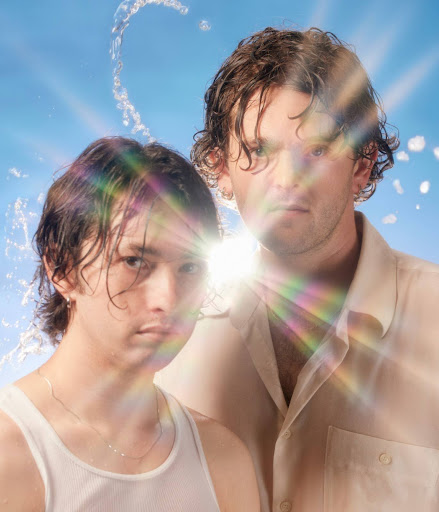The opening shot of “Ava” is one that sets the tone for the whole film. A long, wide shot focuses on the happenings of a French beach, following a pure black dog as it darts across the various shapes and sizes of people that lie across the sand. Instantly, my mind jumped to an old faded postcard from Capri, Italy that I have, one covered in a 1970s-sepia tone beach and evidence of a former residence in a sunspot. This is what “Ava” does: it reminds you of something of your own childhood and proceeds to elevate it to the extreme.
Ava is the sullen-faced thirteen-year-old who faces a daunting situation. She discovers over the course of the summer that her retinitis pigmentosa has exponentially worsened and she will soon become permanently blind. There exists palpable friction between her and her single mother, Maude, who despite vowing to make this a summer to remember, seemingly forgets about her in the chase of a summer romance. Enter Ava’s own summer romance: Juan. Juan, owner of the black dog seen in the first shot and one that Ava fondly names “Lupo,” is the dark, mysterious outlaw that lives in a crevice of abandoned cinder blocks farther down the beach. When tensions increase, both run away together in a Bonnie and Clyde routine but instead of a classic Ford, they have a stolen motorbike and large black dog sandwiched between.
“Ava,” is about growing up quick and fast. She wants to condition herself to face the world blind. And in her effort to condition herself, she sees herself as older than she is. She runs away, falls in love, and loses her virginity at thirteen. Her self-described mean attitude is a disdain at the world that cannot take care of itself, like her baby sibling. She’s not a likeable character but she does not need to be, as many at her age were not very likeable themselves. It is also worth mentioning that Noée Abita’s large, dark eyes add a depth to the story when the dialogue disappears; her eyes do half of the emotional lifting.
Through the use of 13mm film, there is a feeling that everything you watch is a hazy memory, something you forgot happened a very long time ago, exacerbated by a feeling of childlike joy, frustration, and curiosity that courses through many of its scenes. The moment that Juan and Ava move from long stares to friends is one that is made up in juvenile play with an adult twist; they both cover themselves in clay, branches, and twigs, naked from the waist up, and steal alcohol and clothing from nudist beachgoers by gunpoint. We do not know how exactly that moment came to be but we know where it ends. Something unlocked in Ava.
Juan represents something wild and suppressed in Ava; it is with him that her sexuality is awakened. While knowing that his heart belongs to another, watching her attempt to win his gaze for more than a few moments are simultaneously sad and beautiful. When she calls for his attention and lip-syncs a song in his direction, the audience member believes for a minute that it might actually work before it doesn’t. It is not a healthy relationship nor is it meant to be. While it is uncomfortable to watch the relationship, at times sexual, between the eighteen-year-old Juan and the thirteen-year-old Ava, it is easy to see the allure of it from the thirteen-year-old perspective.
However, it is in this relationship that the crux of the film’s faults occurs. The generous nudity of the thirteen-year-old character (although the actress was seventeen at the time) is unnecessary and induces an uncomfortable feeling, an exploitative feeling on its audience. There, at times, appears to be many threads that are left untied. Where her nightmares or the shrinking black circles come into play is never revealed. Stylistically there are a lot of choices made for the aesthetic but do not contribute to the storyline. The ending, while a gorgeous shot, will leave some audiences yearning for more as well.
However, the light and 35mm film, headed by DP Paul Guilhaume who also co-wrote the script, makes this a magical experience to watch. Gorgeously shot with electric night scenes and day scenes shrouded in summer heat, the light is another way of seeing Ava’s sight. There is a knowledge that any second that this may be the last moment Ava can see; this knowledge brightens the colors and lights to the extreme and adds an urgency to the pacing of the film, a disadvantage in the second act. However, this fact turns reflection on its audience, in which we may ask ourselves what exactly we would do in the same circumstances.









